Addison’s disease in dogs is an uncommon disorder of the adrenal glands. Addison’s disease is also known as hypoadrenocorticism and it is caused by the deficiency of one or more essential hormones produced by the adrenal glands.
Addison’s disease is difficult to diagnose since the signs are similar to other illnesses and they can be inconsistent. That being said, Addison’s disease can become a life-threatening emergency if the hormone levels become critically low.
If your dog is suddenly vomiting, having diarrhoea and collapsing visit the nearest veterinary clinic for immediate supportive care and treatment.
Is Your Dog at Risk of Developing Addison’s Disease?
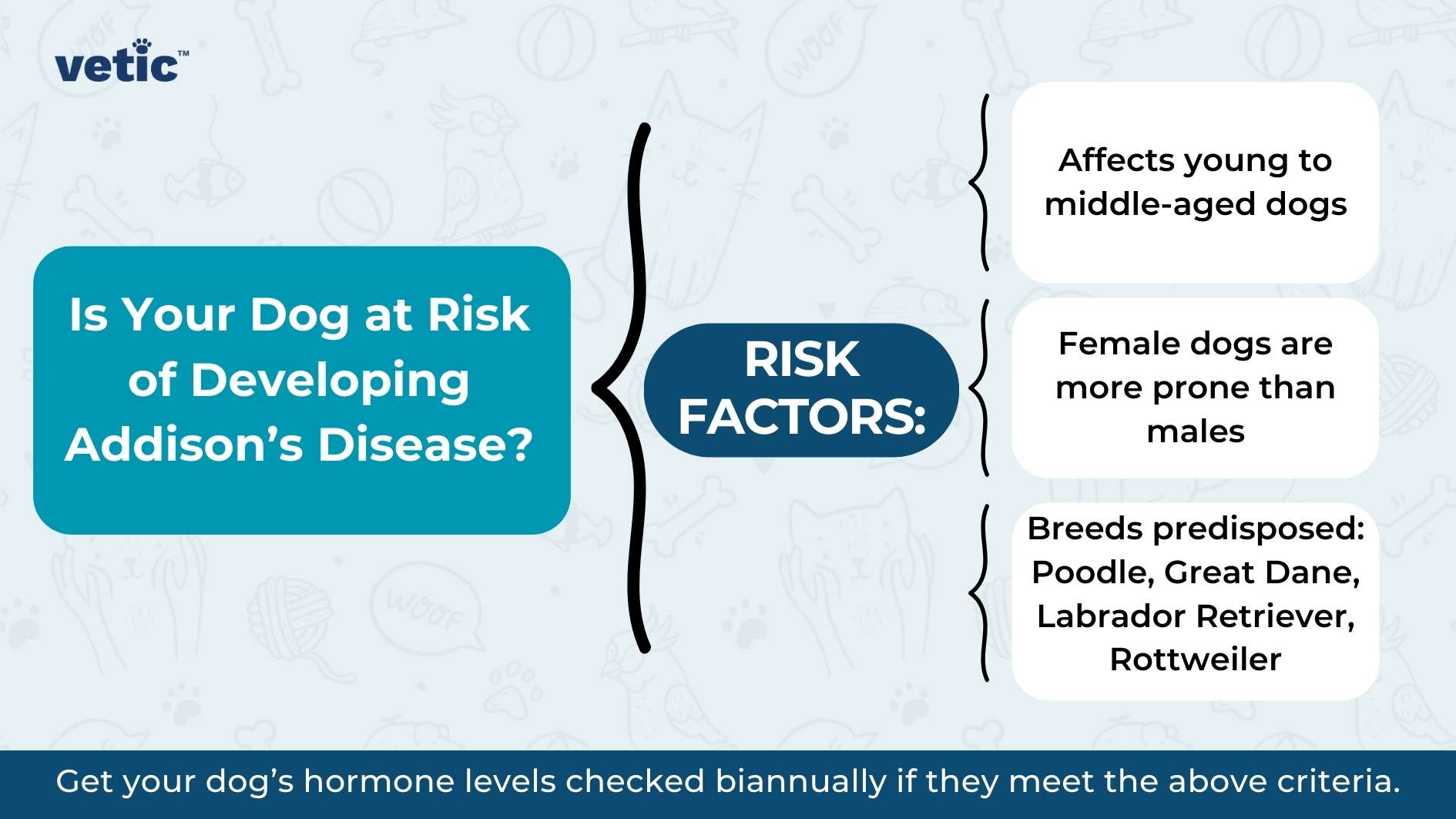
- Addison’s is usually diagnosed in young and middle-aged dogs.
- Female dogs are more at risk of developing Addison’s as compared to male dogs.
- Poodle, Great Dane, Labrador Retriever and Rottweiler are breeds predisposed to Addison’s disease.
If your dog meets these criteria, you need to get their hormone levels checked at least twice every year!
What Causes Addison’s Disease in Dogs?
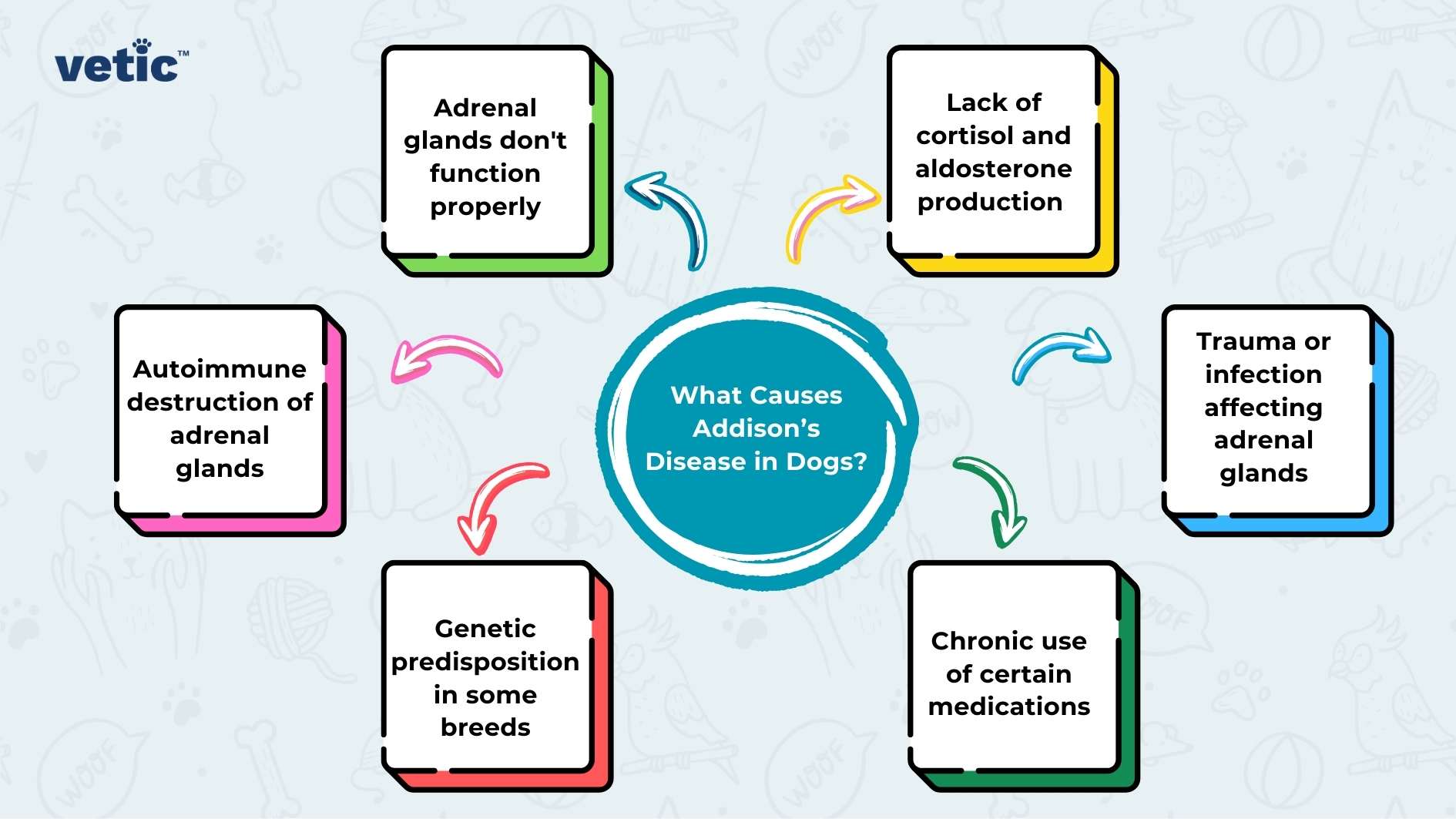
Addison’s Disease in dogs is caused by a lack of the hormones produced by the adrenal glands. The adrenal glands produce multiple hormones, such as cortisol and aldosterone. These are responsible for maintaining the level of electrolytes in our systems, blood pressure, hydration levels, stress responses and metabolism.
Addison’s disease in dogs has a hereditary factor. Multiple studies show a common genetic factor among particular breeds of dogs that increase their susceptibility towards hypoadrenocorticism.
What are the clinical signs of Addison’s Disease in dogs?
Hypoadrenocorticism or Addison’s Disease can elicit multiple signs which can be easily confused with the signs of other diseases. These signs can come and go, and can be highly non-specific.
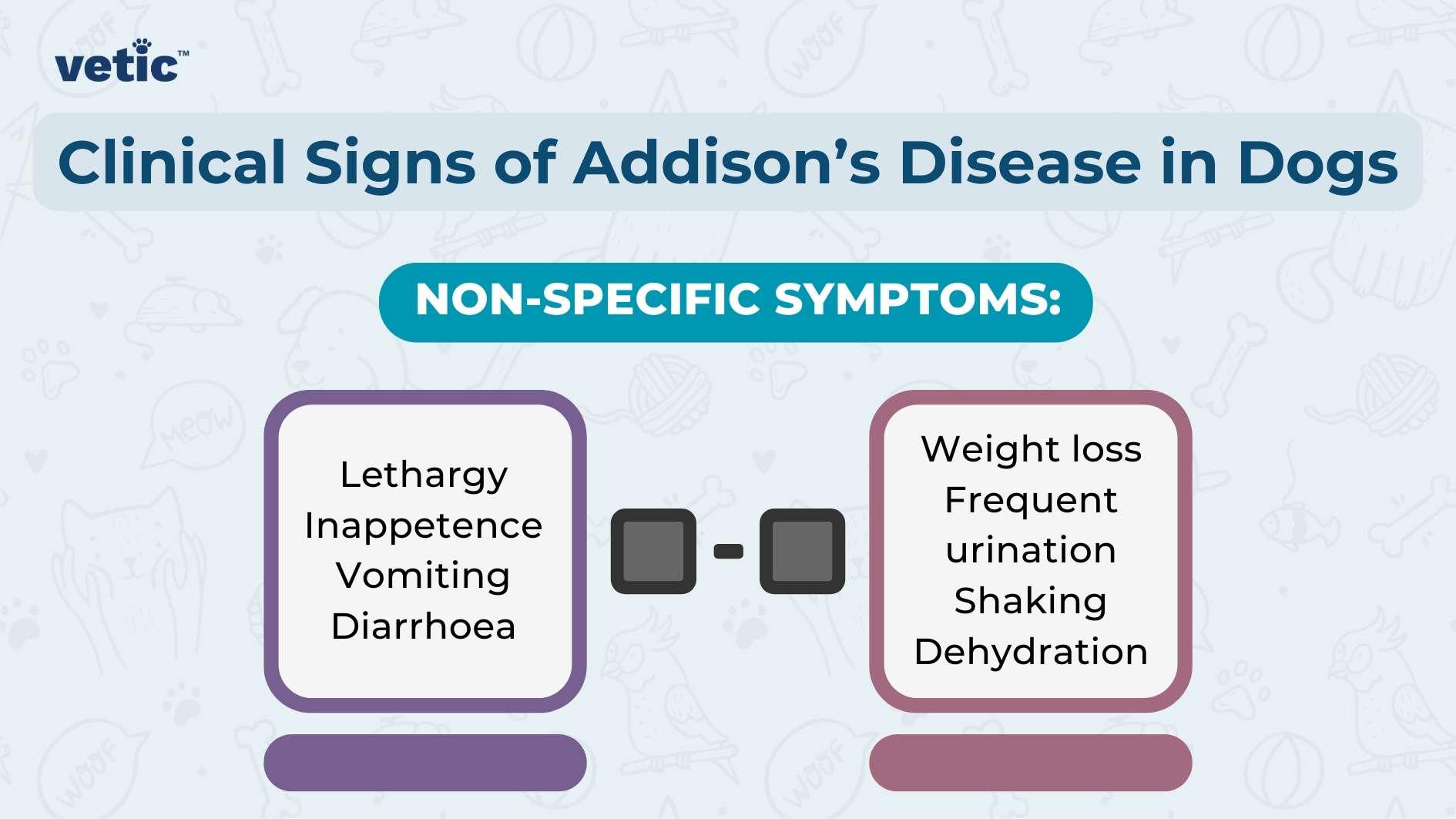
The common signs of hypoadrenocorticism or Addison’s disease in dogs –
- Lethargy
- Inappetance
- Diarrhoea
- Vomiting
- Weight loss
- Increased thirst
- Frequent urination
- Shaking or trembling
- Dehydration
- Weakness
In a few cases, Addison’s disease can present itself as Addisonian crisis, which is a medical emergency. It can show up as a sudden illness with vomiting, diarrhoea and collapse.
So, if your dog has been showing any of the 10 signs mentioned above over a few weeks, in different intensities, you need to consult the veterinarian. Choose a veterinary clinic with an advanced diagnostic setup, treatment area and in-patient facility.
How is Addison’s in dogs diagnosed?
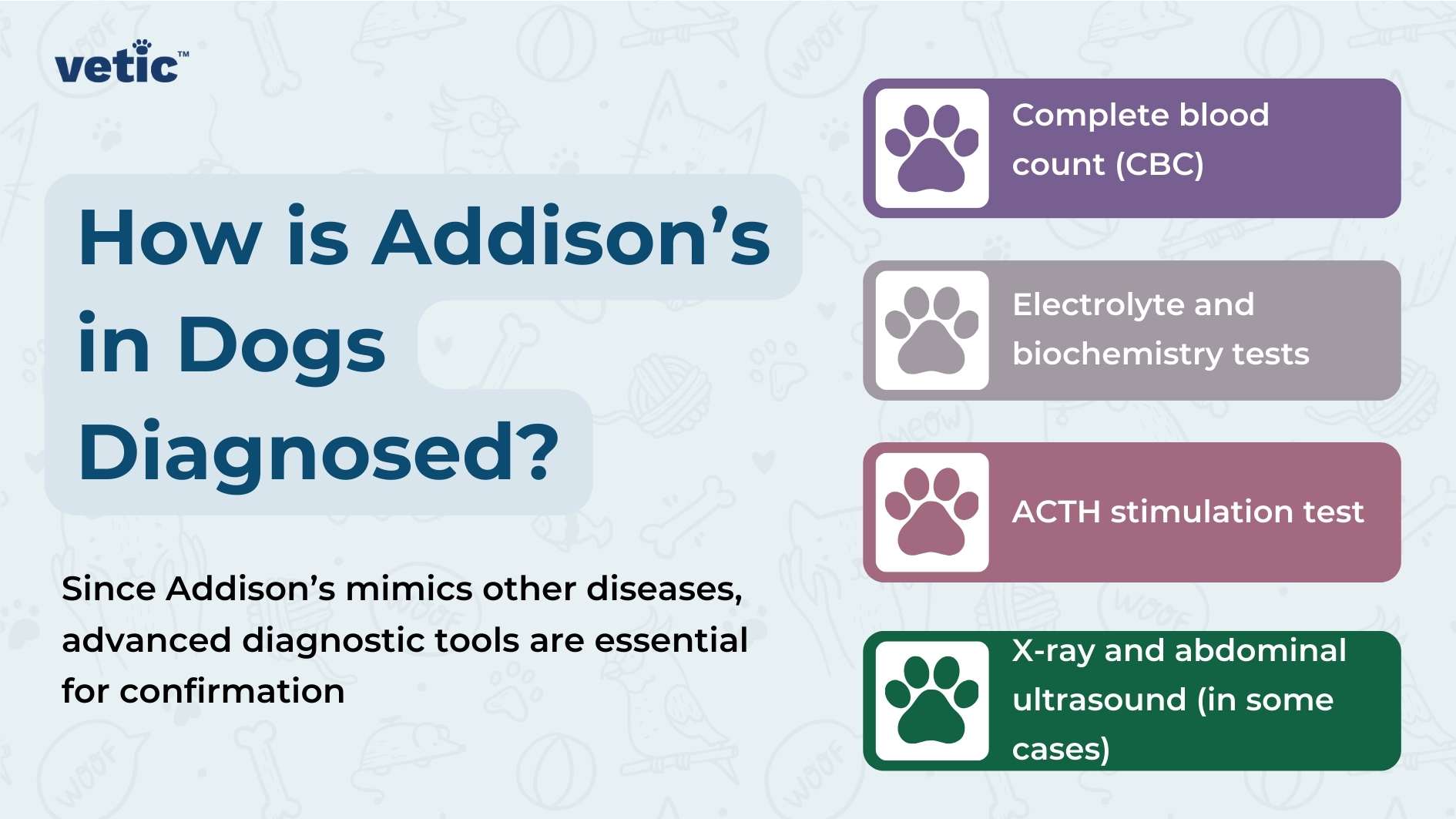
The veterinarian needs to do more than the regular physical evaluation to confirm Addison’s disease in dogs since it is one of the most difficult metabolic disorders to diagnose.
Your dog will require –
- Complete blood count
- Biochemistry tests
- Urine tests
- Electrolyte tests
- ACTH Stimulation
Sometimes, X-ray and abdominal ultrasound are also required to understand the cause of the hypoadrenocorticism and rule out other disorders.
Treatment for Addison’s disease in dogs
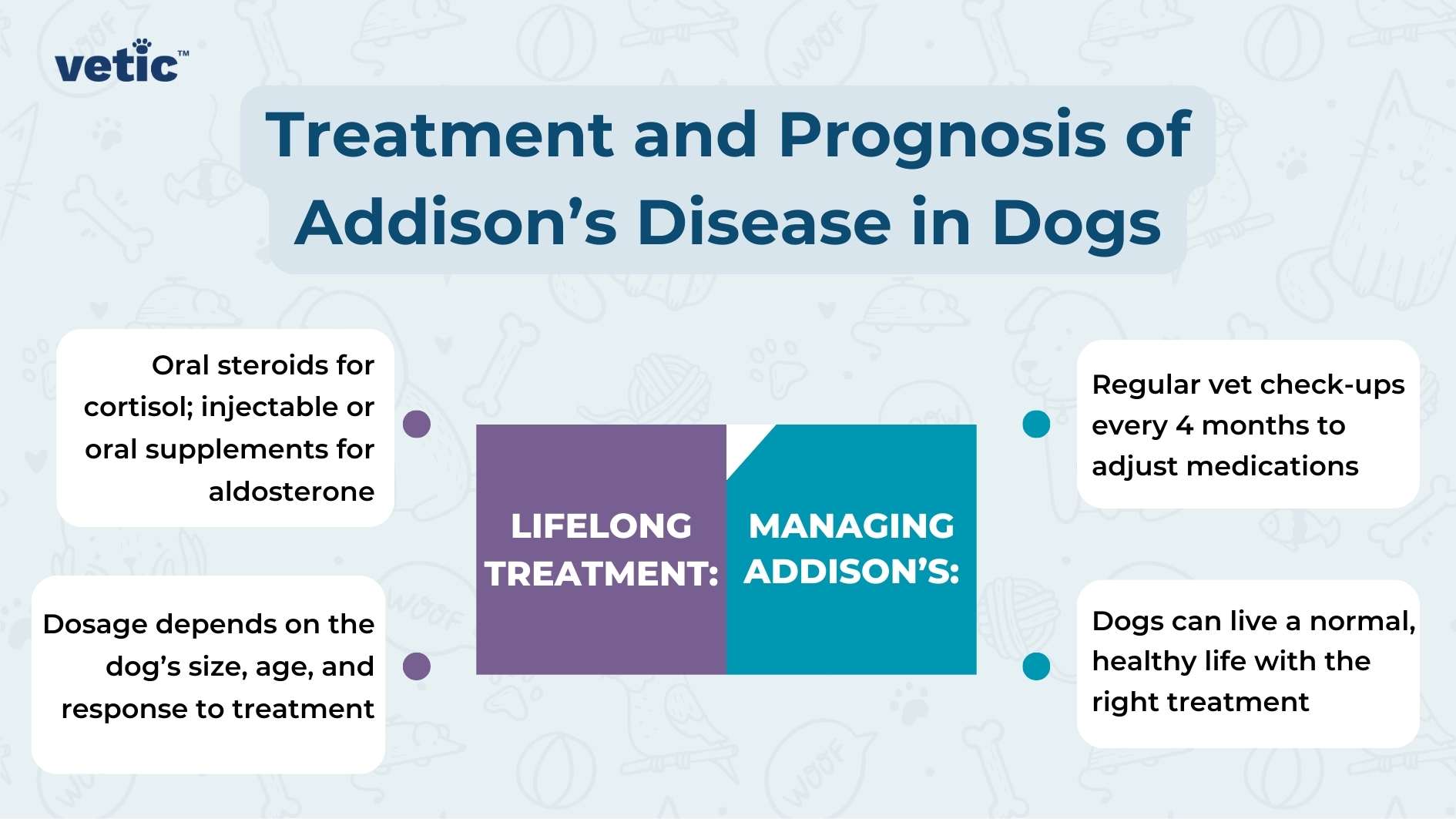
The treatment for Addison’s disease in dogs typically requires a lifelong supplement of cortisol and aldosterone.
Cortisol supplements are given with an oral steroid and aldosterone supplements require another supplement that commonly comes in an injectable form. Right now, another oral supplement is available in the US which can replace both cortisol and aldosterone supplements thereby reducing the number of medicines your dog has to take daily.
The dose of each of these medicines and supplements depends on your dog’s weight, age, existing medical conditions, medical history and lifestyle. The ideal way to go about treating Addison’s disease in dogs is by monitoring your dog’s overall health and response to the treatment and reducing the medicine dose to the lowest effective dose possible.
In some cases of acute Addisonian crisis, dogs may require IV fluid along with IV medicines to protect their gut health and organ functions.

What’s the prognosis of Addison’s disease in dogs?
While there’s no cure for Addison’s disease, any dog can live a long and happy life with the right medication.
With timely diagnosis and correct treatment, most dogs with Addison’s disease have excellent chances of living a high quality of life.
There is no natural remedy for Addison’s disease. You cannot stop the medicines once you see your dog is eating and playing normally. You need to visit the veterinarian at least once in 4 months to follow-up on their Addison’s Disease management journey.
FAQs about Addison’s Disease in dogs
Can my dog live a normal life with Addison’s disease?
Yes, with proper treatment, most dogs can live a long, happy, and healthy life despite Addison’s disease.
How often will my dog need medication for Addison’s disease?
Your dog will need lifelong hormone supplements daily to manage Addison’s disease and maintain their health.
How does Addison’s disease affect my dog’s overall health?
Addison’s disease disrupts hormone production, affecting the kidneys, heart, and digestive system, leading to dehydration, low blood pressure, and weakness.
Can Addison’s disease in dogs be cured?
There’s no cure, but it can be effectively managed with lifelong medication and regular vet check-ups.
Does Addison’s disease affect only certain dog breeds?
Yes, breeds like Poodles, Great Danes, and Labrador Retrievers are more prone to developing Addison’s disease.
How can I tell if my dog is having a flare-up of Addison’s?
Watch for lethargy, vomiting, diarrhoea, weight loss, and shaking, which may signal a flare-up of Addison’s disease.
Will my dog need regular blood tests after being diagnosed?
Yes, routine blood work every few months ensures medication is working and your dog’s health remains stable.
Can Addison’s Disease in dogs be an emergency?
An Addisonian crisis is a life-threatening emergency where a dog suddenly collapses due to dangerously low hormone levels.
